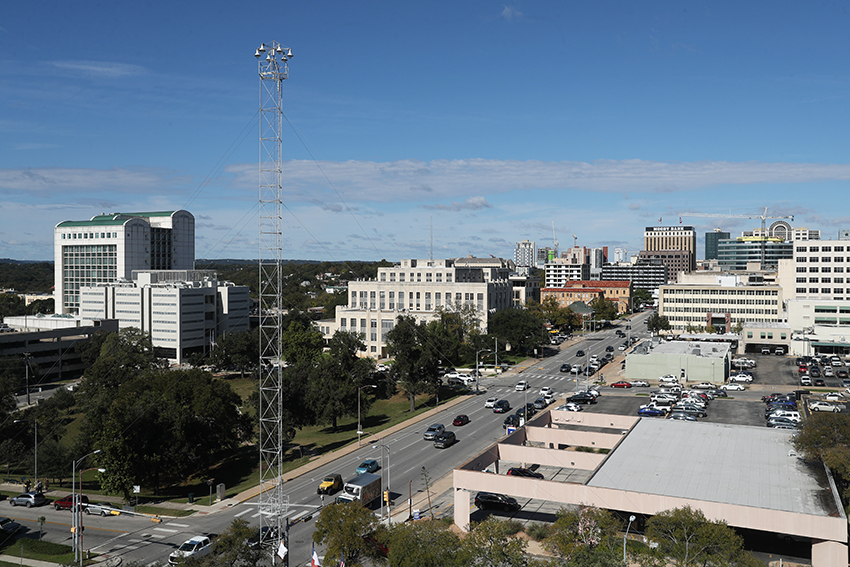Seventeen moonlight towers remain standing in the world and all reside in Austin. However, few people know their history.
These 165-foot-tall moonlight towers were the main sources of outdoor lighting worldwide in the late 1800s. Over time, most cities disassembled the towers when they became inconvenient.
Ray Spivey, co-producer of the 2016 documentary “The Last of the Moonlight Towers,” said during the film’s production, he learned the Austin towers are second-generation light towers from Detroit. Unfortunately, Spivey pointed out, the older towers caused safety issues because they were built with four points of contact on the ground, and cars could easily hit them.
“It was really kind of a happy accident why (Austin’s) are still around,” Spivey said. “The towers got preserved long enough so that in the ‘70s, they were made historical monuments.”
According to the Austin History Center, the towers were originally comprised of carbon arc lamps but were replaced with incandescent and later, mercury vapor lamps. Spivey said the original lighting had electricity running through two carbon rods. The electricity jumping from one rod to the other caused the spark lighting the towers.
“You get a real glimpse of how smart our forefathers were,” Spivey said. “They were looking for a way to create a public lighting system that can light multiple blocks without stringing a lot of wire everywhere.”
To this day, the towers shine with LED bulbs, Spivey said. A restoration team also worked to maintain the towers in 1995. David Hoffman, a restoration architect, said they improvised because manuals for restoring light towers were nonexistent.
“It wasn’t like a restored house, where (the city) could make a judgment about whether it was good or bad because they’re familiar with house restoration,” Hoffman said. “Nobody had restored a moonlight tower.”
The city continues to maintain the towers, and some have alternative uses, including the Zilker Park tower, which transforms into the famous Christmas tree every winter.
Despite the act being illegal, some climb the towers, including Ren Garcia, who has climbed six towers in Austin.
“I was just young, punk, restless and in my early 20s,” Garcia said. “It seemed like something that would be fun to do.”
Garcia climbed towers at night, but only in neighborhoods — not the busy, downtown areas. He said he did this because it lowered his chances of getting caught, and he and his friends could easily reach the tower’s ladder by standing on a trash can.
“It was scary at first, and then the thrill of actually getting to the top and seeing the view was pretty amazing,” Garcia said. “You could see clear across town, all the way through Round Rock and beyond. It was a spectacular thing to witness because back then, there weren’t very many tall (buildings), and you can actually get a good view from Austin.”
As these light towers evoke wonder from both viewers at the top and bottom of the towers, Hoffman said they are also a piece of Austin’s unusual history.
“(The towers) are no longer as functional as they were, but they’ve become iconic and identified with Austin,” Hoffman said. “It’s part of what makes Austin weird and unique.”















